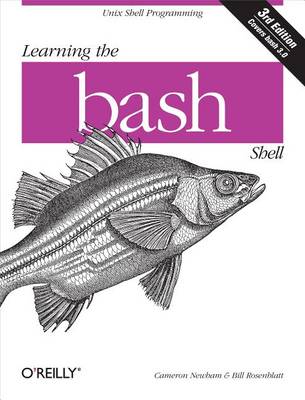The first thing users of the Linux operating system come face to face with is the shell. "Shell" is the UNIX term for a user interface to the system -- something that lets you communicate with the computer via the keyboard and display. "Bash," the Free Software Foundation's "Bourne Again Shell," is the default shell for Linux, the popular free UNIX-like operating system. It's also a replacement for the standard UNIX Bourne shell, which serves both as a user interface and as a programming language. Like the FSF's other tools, "bash" is more than a mere replacement: it extends the Bourne shell in many ways. New features include command line editing, key bindings, integrated programming features, command completion, control structures (especially the select construct, which enables you to create menus easily) and new ways to customize your environment.Whether you want to use "bash" for its user interface or its programming features you will find "Learning the bash Shell" a valuable guide. The book covers all of "bash"'s features, both for interactive use and programming. If you are new to shell programming, "Learning the bash Shell" provides an excellent introduction, covering everything from the most basic to the most advanced features, like signal handling and command line processing. If you've been writing shell scripts for years, it offers a great way to find out what the new shell offers. The book is full of examples of shell commands and programs that are designed to be useful in your everyday life as a user, not just to illustrate the feature being explained. All of these examples are freely available to you online on the Internet.With this book you'll learn: How to install "bash" as your login shellThe basics of interactive shell use, including UNIX file and directory structures, standard I/O, and background jobsCommand line editing, history substitution, and key bindingsHow to customize your shell environment without programmingThe nuts and bolts of basic shell programming, flow control structures, command-line options and typed variablesProcess handling, from job control to processes, coroutines and subshellsDebugging techniques, such as trace and verbose modesTechniques for implementing system-wide shell customization and features related to system security
- ISBN10 0596107722
- ISBN13 9780596107727
- Publish Date 29 March 2005 (first published 7 November 1995)
- Publish Status Active
- Imprint O'Reilly Media
- Edition 3rd ed.
- Format eBook
- Pages 354
- Language English
